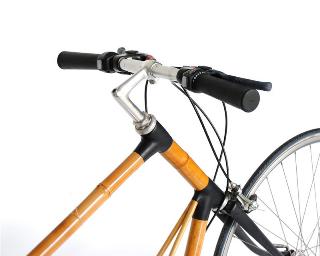Jan 5 2015
Bambootec consortium from Yucatán, state in the south of Mexico, designed a bamboo bicycle that transforms the kinetic energy generated by pedaling into a source of electricity that has the ability to simultaneously recharge mobile devices, smartphone’s external battery and a navigation dashboard located on the handlebars which measures the distance and time, and also has bluetooth connection.

The energy transfer is possible thanks to a converter, which is composed of a circuit that starts on the rim, captures the kinetic energy and converts it into electricity. After passing through the core of the system located under the seat, which purpose is to regulate the voltage generated and prevent discharges, said Cristina Espinosa López, founder of Bambootec.
When pedaling, the cyclist produces energy that is transformed into electricity. However, if done irregularly, by either unexpected racing or braking, the load rises and falls; to solve this problem a regulator was added to the converter to administer the charge evenly.
In addition to the power converter system, the bicycle has a frame (vertices and edges) assembled with bamboo sticks connected by a special resin. The aim was to replace metal parts for this natural material in order to provide the vehicle with greater resistance (supports 120 kilos), also making it lighter and less prone to heat, explained the founder of Bambootec.
Once the converter regulates the energy charge, this is transmitted through three channels of power, which are cables with an usb output. One is connected to the navigation screen located on the handlebars of the bicycle, which indicates the number of kilometers and time passed, and provides the option to establish a connection via Bluetooth to link to a smartphone.
The other terminal of the power converter recharges any mobile device, while the third one is exclusive to recharge smartphone’s external batteries. It is important to highlight that the energy generated by the bicycle (over 10 volts) is enough to feed the three tracks simultaneously, López Espinosa specified.
Currently, bicycle testing have shown that the charge capacity for the devices is of one percent per minute. It is required to optimize the system in order to accelerate the charging process.
The team integrated by Espinosa Lopez, Alfonso Xool Moo, Luis Villar del Maso and Edson Ochoa Herrera has as a main goal to create the necessary machinery to scale the product and mass produce it; because of this the company participated in the Cleantech Challenge Mexico, a contest that promotes the development of green enterprises. (Agencia ID)